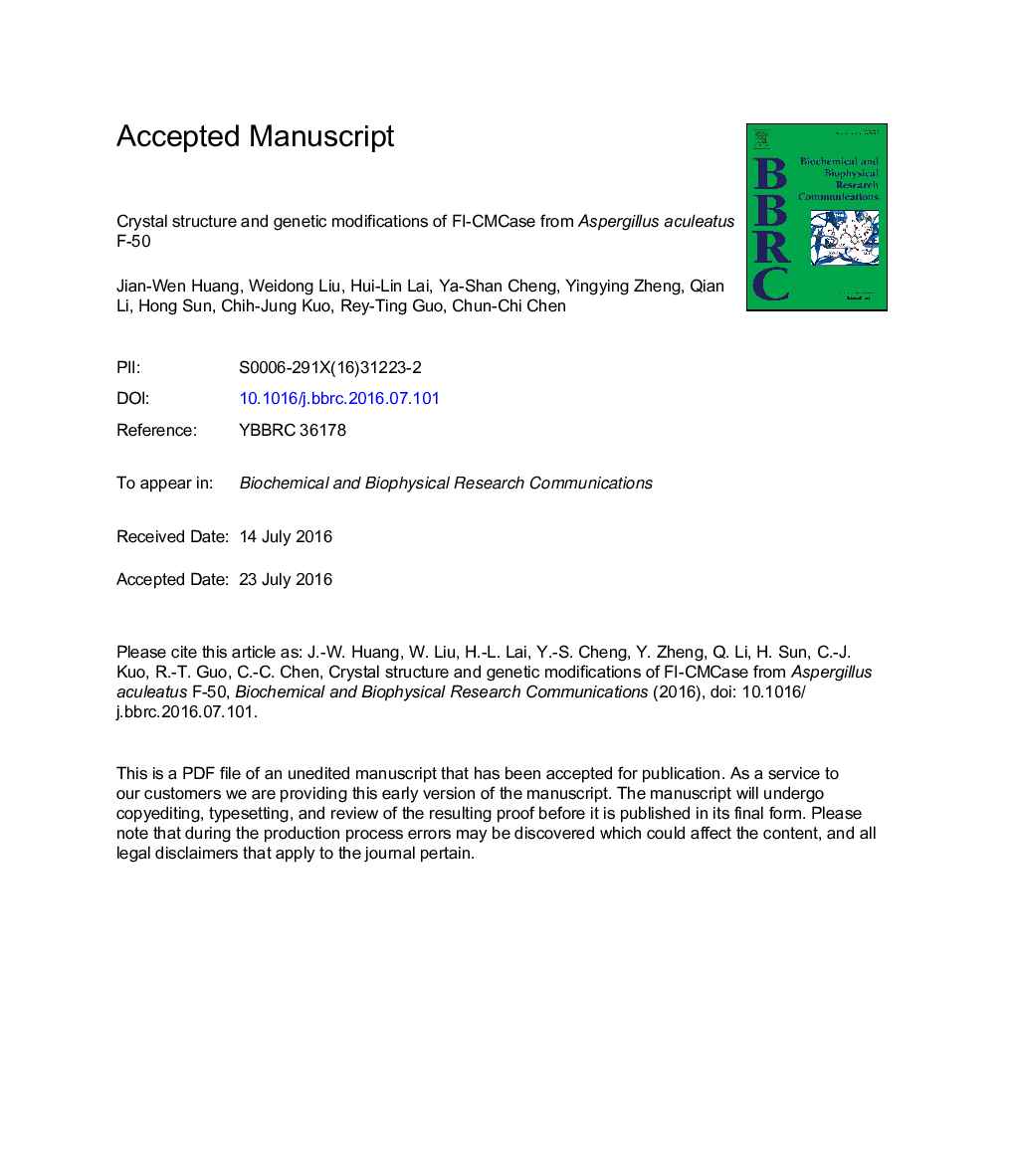| Article ID | Journal | Published Year | Pages | File Type |
|---|---|---|---|---|
| 5506778 | Biochemical and Biophysical Research Communications | 2016 | 31 Pages |
Abstract
Cellulose is the major component of the plant cell wall and the most abundant renewable biomass on earth, and its decomposition has proven to be very useful in many commercial applications. Endo-1,4-β-d-glucanase (EC 3.2.1.4; endoglucanase), which catalyzes the random hydrolysis of 1,4-β-glycosidic bonds of the cellulose main chain to cleave cellulose into smaller fragments, is the key cellulolytic enzyme. An endoglucanase isolated from Aspergillus aculeatus F-50 (FI-CMCase), which is classified into the glycoside hydrolase (GH) family 12, was demonstrated to be effectively expressed in the industrial strain Pichia pastoris. Here, the crystal structure and complex structures of P. pastoris-expressed FI-CMCase were solved to high resolution. The overall structure is analyzed and compared to other GH12 members. In addition, the substrate-surrounding residues were engineered to search for variants with improved enzymatic activity. Among 14 mutants constructed, one with two-fold increase in protein expression was identified, which possesses a potential to be further developed as a commercial enzyme product.
Related Topics
Life Sciences
Biochemistry, Genetics and Molecular Biology
Biochemistry
Authors
Jian-Wen Huang, Weidong Liu, Hui-Lin Lai, Ya-Shan Cheng, Yingying Zheng, Qian Li, Hong Sun, Chih-Jung Kuo, Rey-Ting Guo, Chun-Chi Chen,
